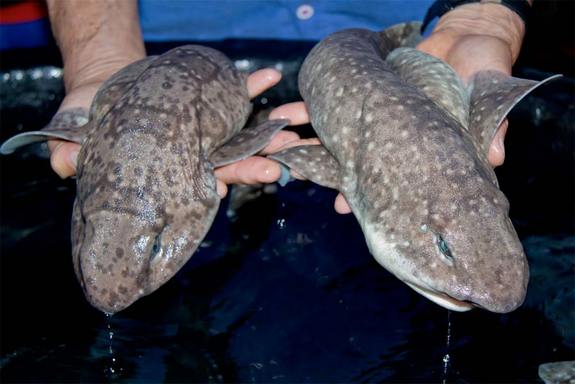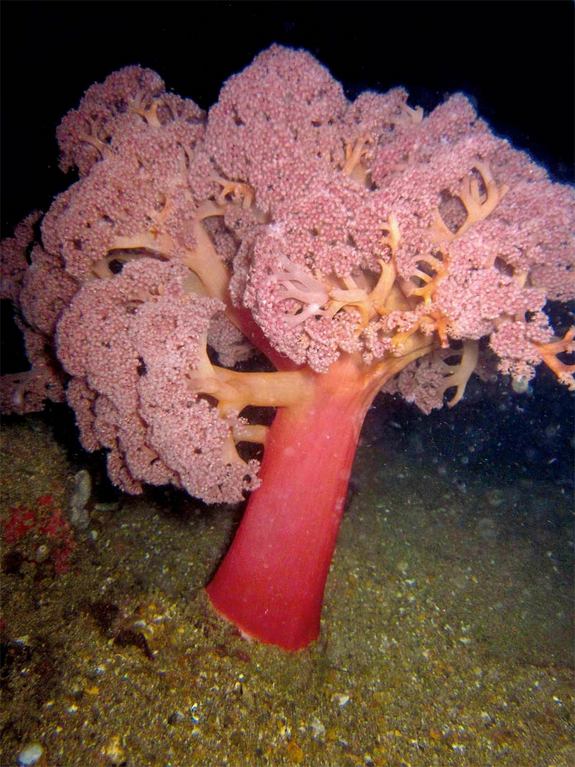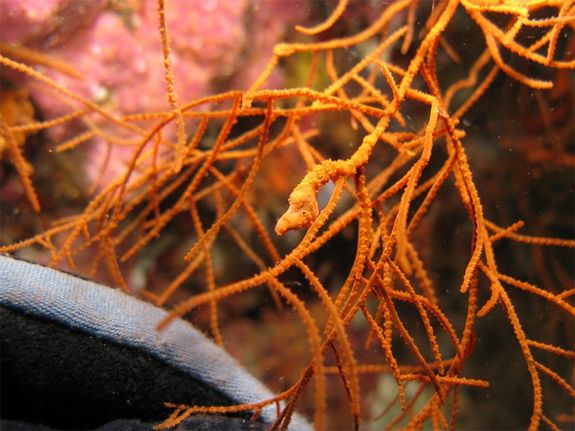Shark that inflates with water discovered in PHL deep
By BEA C. CUPIN, GMA News
In the extreme deep of Philippine seas, a newly discovered shark species scares off its enemies with the sudden bulk created by filling its stomach with water.
This "inflatable" swell shark was only one of an estimated 300 new animal and plant species discovered by a historic scientific expedition in the Philippines organized by the California Academy of Sciences (CAS).
The other discoveries include a cicada with a “distinctive ‘laughing’ call," a starfish that only eats sunken driftwood, three lobster species that don’t carry shells on their backs and instead hide in sea crevices, a crab with needle-lined pincers and a worm-line pipefish that lives in colonies of soft coral.

According to a statement released by the CAS Friday (Saturday in the Philippines), the deep-sea swell shark “inflates its stomach with water to bulk up and scare off other predators."
The 42-day 2011 Philippine Biodiversity Expedition took place from April to June.
Early this month, they announced the discovery of 75 possible new species endemic to the country.
The collected specimens will be subject to DNA sequencing in the next few months before they can be confirmed and described, according to the CAS website.

Regardless of the results, Dr. Terrence Gosliner, Dean of Science and Research at the California Academy of Sciences and leader of the expedition, called the Philippines “the hottest of the hotspots for diverse and threatened life on Earth."
“We found new species during nearly every dive and hike as we surveyed the country’s reefs, rainforests, and the ocean floor," he added. The expedition is the biggest the CAS has conducted thus far, and is the most extensive in the Philippines.
“All of the new species add weight to the idea that the Philippines is a critically important haven for biodiversity, and that its waters likely house more species than any other marine environment on Earth," the statement read.
The expedition, which included scientists from the University of the Philippines, surveyed different areas in Luzon. While creating species lists and distribution maps for different plants, insects, reptiles, amphibians, fish and marine invertebrates, the team discovered over 300 species that were previously unknown to man.
Some of the species, the report noted, may have been undiscovered in the past because of their small size and the remoteness of their habitats.
The goblin spiders, sea slugs and barnacles the scientists found were only a few millimeters long, said the report. The scientists also braved ocean depths to find a species of snake eel and the steep upper slopes of Mt. Isarog in Camarines Sur to find a species of spikemoss, a primitive plant.

An estimated 90 percent of the planet’s species have yet to be discovered, the report noted, and those unknown species might just be found in places like the Philippines.
“In order to make smart decisions about how to conserve what is left of our planet’s biodiversity, we must make a concerted effort to rapidly increase our knowledge about these life forms and their distribution," said the report.
Unlike most expeditions, the 2011 Philippine Biodiversity Expedition team unveiled every possible new discovery as they made it.
The team will also be presenting the results of their expedition to the San Francisco public on Thursday, June 30 during the Academy’s NightLife event (Friday morning in the Philippines). - HS, GMA News
This "inflatable" swell shark was only one of an estimated 300 new animal and plant species discovered by a historic scientific expedition in the Philippines organized by the California Academy of Sciences (CAS).
The other discoveries include a cicada with a “distinctive ‘laughing’ call," a starfish that only eats sunken driftwood, three lobster species that don’t carry shells on their backs and instead hide in sea crevices, a crab with needle-lined pincers and a worm-line pipefish that lives in colonies of soft coral.

This newly discovered shark species has a special technique for intimidating its enemies. Stephanie Stone, California Academy of Sciences
The 42-day 2011 Philippine Biodiversity Expedition took place from April to June.
Early this month, they announced the discovery of 75 possible new species endemic to the country.
The collected specimens will be subject to DNA sequencing in the next few months before they can be confirmed and described, according to the CAS website.

This tree-like soft coral is likely to be a new species of Umbeliulifera. Photo courtesy of California Academy of Sciences
“We found new species during nearly every dive and hike as we surveyed the country’s reefs, rainforests, and the ocean floor," he added. The expedition is the biggest the CAS has conducted thus far, and is the most extensive in the Philippines.
“All of the new species add weight to the idea that the Philippines is a critically important haven for biodiversity, and that its waters likely house more species than any other marine environment on Earth," the statement read.
The expedition, which included scientists from the University of the Philippines, surveyed different areas in Luzon. While creating species lists and distribution maps for different plants, insects, reptiles, amphibians, fish and marine invertebrates, the team discovered over 300 species that were previously unknown to man.
Some of the species, the report noted, may have been undiscovered in the past because of their small size and the remoteness of their habitats.
The goblin spiders, sea slugs and barnacles the scientists found were only a few millimeters long, said the report. The scientists also braved ocean depths to find a species of snake eel and the steep upper slopes of Mt. Isarog in Camarines Sur to find a species of spikemoss, a primitive plant.

Possible new species from family Oxynaspididae. Photo courtesy of California Academy of Sciences
“In order to make smart decisions about how to conserve what is left of our planet’s biodiversity, we must make a concerted effort to rapidly increase our knowledge about these life forms and their distribution," said the report.
Unlike most expeditions, the 2011 Philippine Biodiversity Expedition team unveiled every possible new discovery as they made it.
| A likely new species of Petalomera crab from the deep sea, discovered during a 2011 expedition to the Philippines. |
| A new species of Nembrotha nudibranch (also known as a sea slug) that was discovered during the California Academy of Sciences' 2011 Philippine Biodiversity Expedition |
A new species of deep-water sea star in the family Caymanostellidae that digests wood.
| This colorful worm is likely a new species of the genus Myrianida, which was found in coral rubble in the Philippines. |
| A potential new species of the urchin Echinothrix, with a distinctive red color that differentiates it from the more brownish, white-banded Echinothrix calamaris. |
The team will also be presenting the results of their expedition to the San Francisco public on Thursday, June 30 during the Academy’s NightLife event (Friday morning in the Philippines). - HS, GMA News
No comments:
Post a Comment